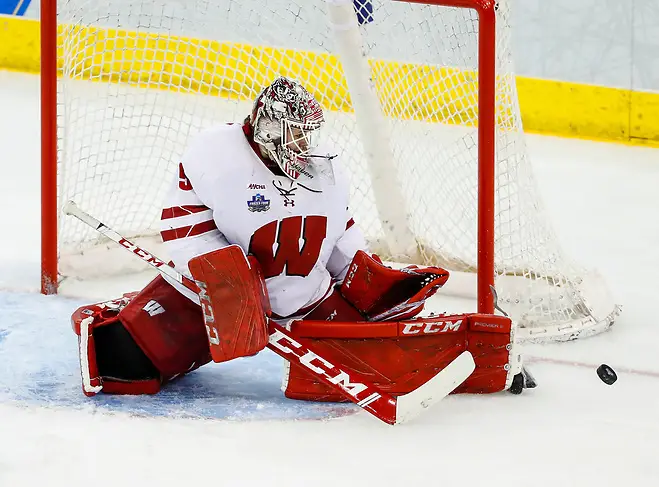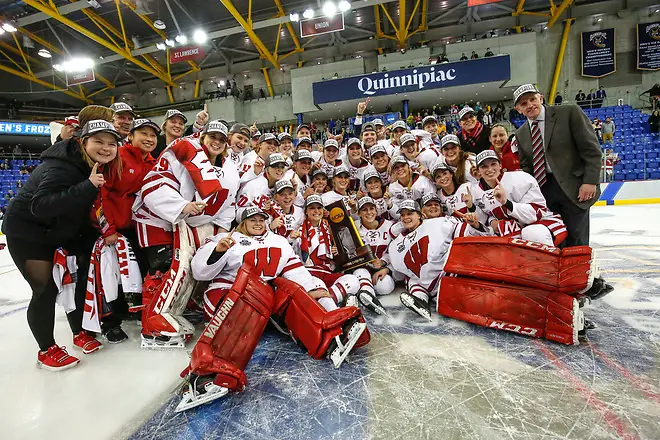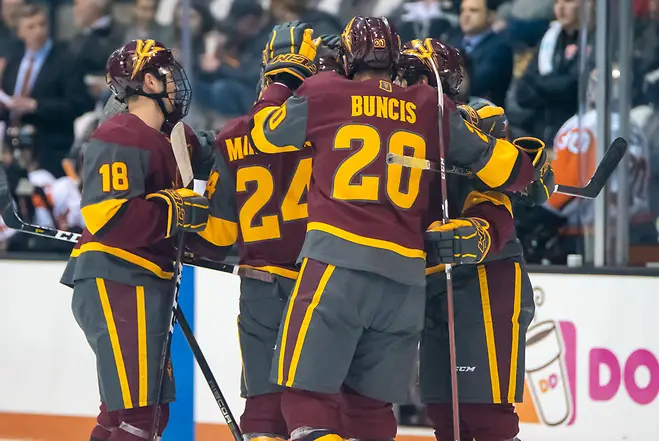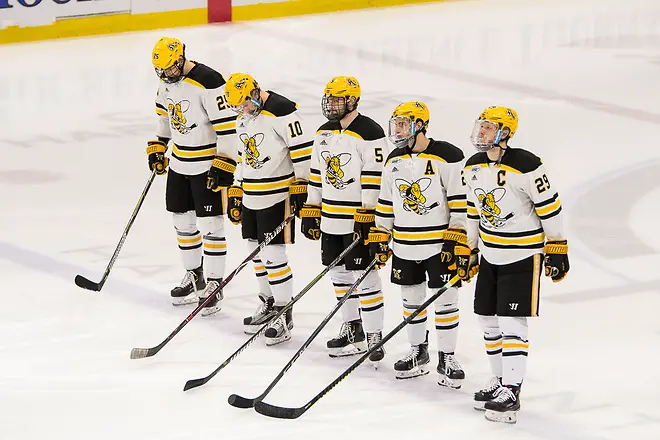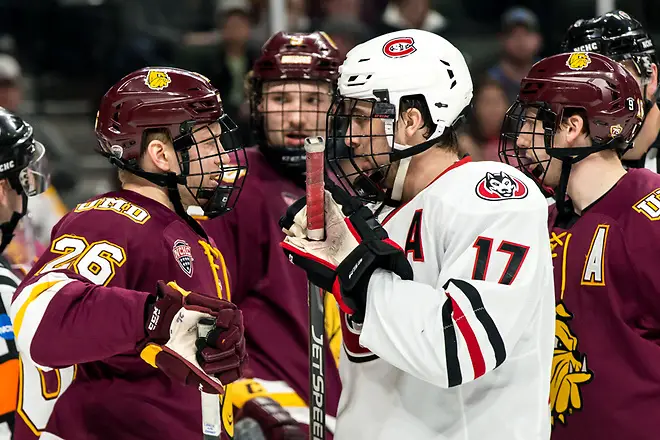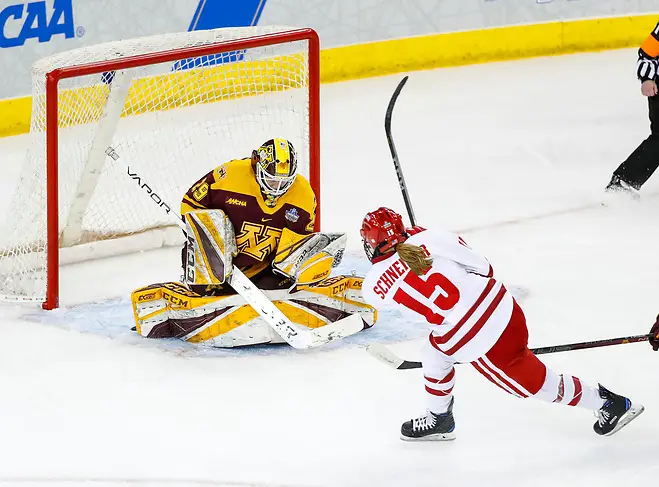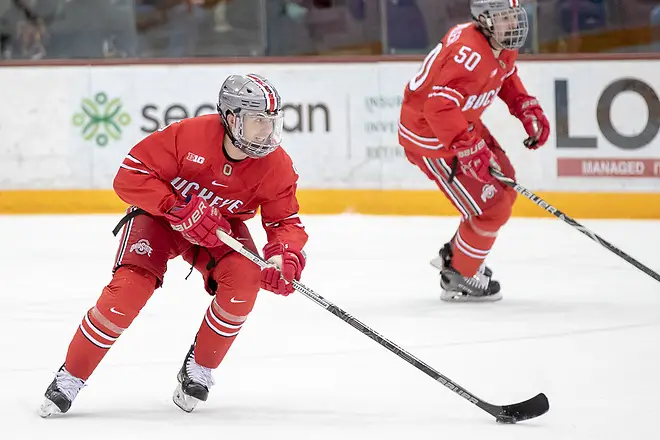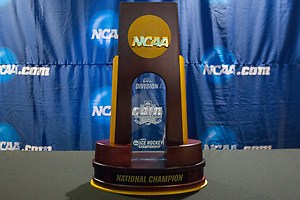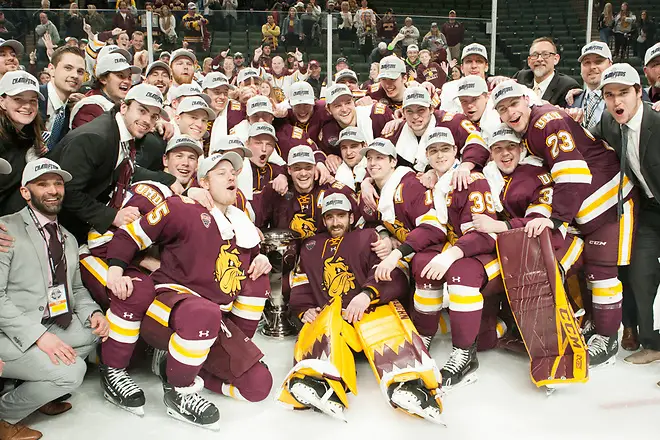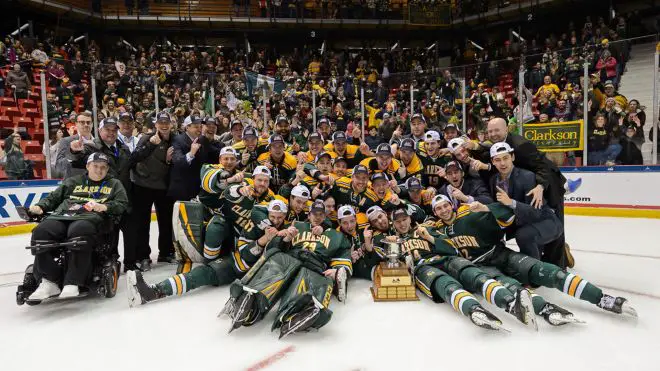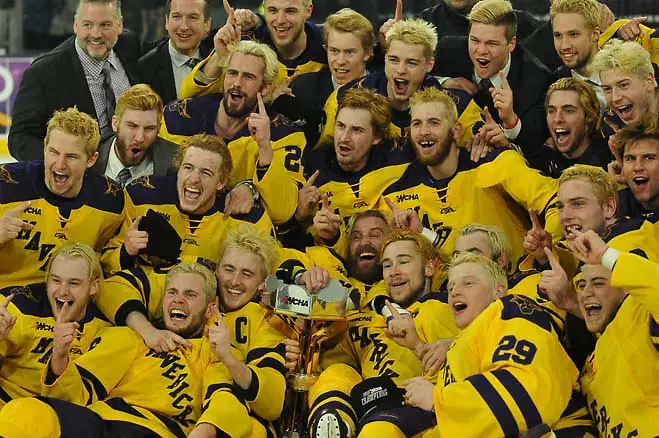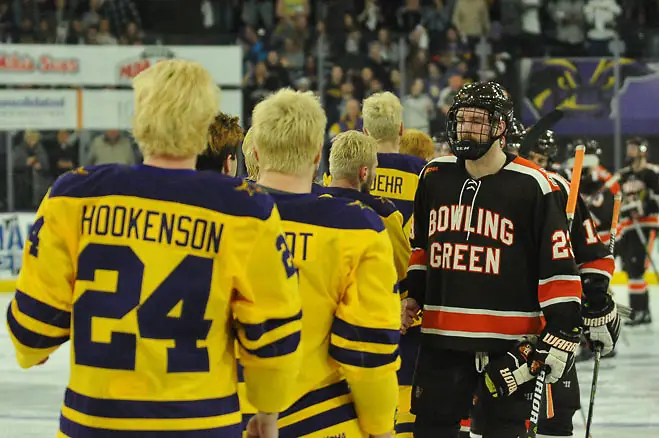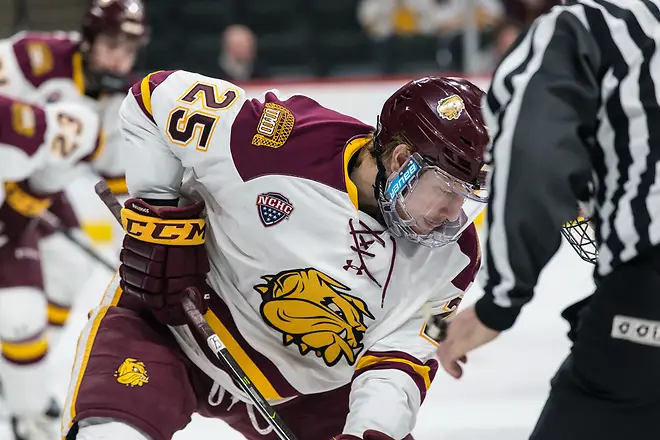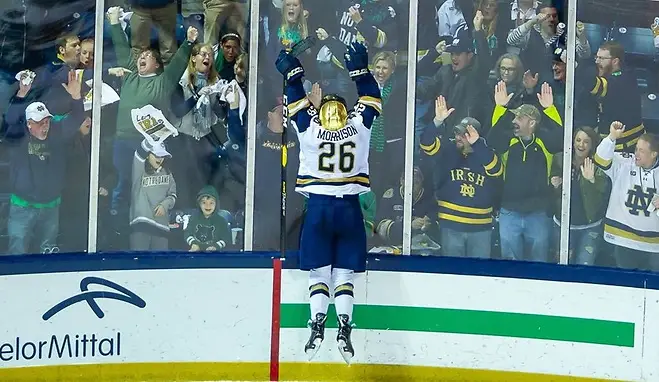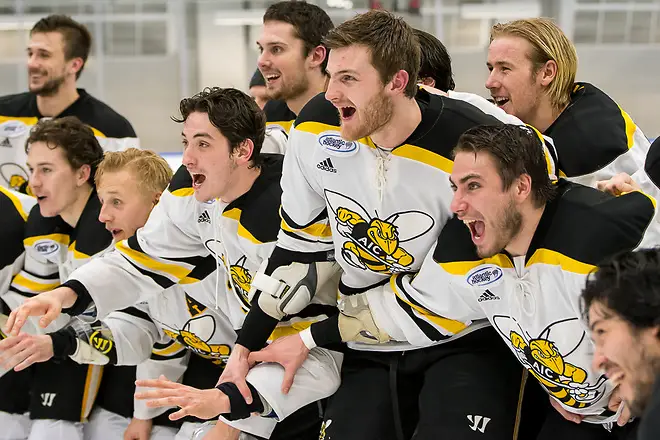
Each week, USCHO.com picks the top 10 moments from the past weekend in our Monday 10 feature.
1. Freaky-deeky Saturday slate of hockey
How about this stat for the numbers nerds out there: As originally pointed out by the NCAA’s Ice Hockey Twitter account, all six conference championship games played Saturday as well as the Division III men’s title game finished with a 3-2 final score.
2. Defending champs back in the saddle
After an exciting finish to wrap up the NCHC conference team – a 3-2 overtime win over St. Cloud State – Minnesota Duluth will look to defend last year’s national title when it opens the NCAA tournament against Bowling Green on Saturday in Allentown, Penn. The Bulldogs put together a 25-11-2 season, but nothing was sweeter for them this winter than having Nick Swaney score on a backhander 4:51 into the second overtime to upset top-ranked St. Cloud State, which received 49 first-place votes in our most recent poll. What’s more, that was Swaney’s third overtime goal of the year. Can the Bulldogs repeat?
3. Upset special
St. Cloud State wasn’t the only highly-ranked team that was upset this weekend. Boston College blanked No. 3 Massachusetts 3-0 during the Hockey East semifinal Friday. The Eagles ultimately lost to Northeastern in the championship, but the precedent was set: Everyone needs to be on top of their game at this point in the season. Rankings don’t protect you from upsets!
4. Clarkson back on top
No. 9 Clarkson won the Whitelaw Cup, given to the ECAC tournament champions, for the first time since 2007 over the week. Chris Klack helped the Golden Knights get over that 12-year drought by scoring at 14:36 into overtime, ensuring his squad with a spot in the NCAA tournament against Notre Dame.
5. Sun Devils are going dancing
Five years ago, Arizona State didn’t even play Division I hockey. Now the Sun Devils will make their first appearance in the NCAA tournament, as they drew Quinnipiac in the opening round. ASU, which plays an independent schedule, hasn’t played since March 2, but put together a 21-12-1 record to earn their berth into the postseason. ASU has only 23 wins in its previous three seasons combined, making this year its best in program history.
6. Notre Dame, Morrison make it two straight B1G titles
On Saturday, Notre Dame beat Penn State 3-2 to win the Big Ten championship for the second-straight year and clinch its fourth-consecutive berth into the NCAA tournament. Just like last year, it was Cam Morrison who secured the win for the Fighting Irish. His wrist shot in the second period snapped a 2-2 tie. It was Morrison who scored the game-winner in overtime of last year’s Big Ten title game versus Ohio State.
7. Congrats, American International!
What a milestone moment for American International over the weekend as it topped Niagara 3-2 in overtime to claim its first-ever AHC tournament title. The No. 19 Yellowjackets got the game-winner at 1:16 in overtime from Hugo Reinhardt, who knocked in a loose puck in front of the net. The win gave them 22 wins this winter, a team record in Division I play, and set up an appearance in the NCAA tournament against St. Cloud State.
8. Mavs still look like a tough team to beat
Coming into the weekend, Bowling Green was the only team to really give No. 2 Minnesota State much trouble in the WCHA this season. But the Mavs got the final say in that rivalry, as they edged the Falcons 3-2 in overtime Saturday night to claim the Jeff Sauer Championship Trophy. Nick Rivera scored the game-winner on a deflected puck just 1:37 into the extra frame The Mavs face Providence to open the NCAA tournament this weekend.
9. Another championship trophy for the powerhouse Badgers
Sophia Shaver and Annie Pankowski each scored to push the No. 1 Wisconsin women’s team past rival Minnesota 2-0 in the national championship Sunday. The Badgers claimed their fifth national title, all coming since the 2006 season. Pankowski scored 11 goals during the playoffs, including three during the Frozen Four weekend. Her goal in the championship set a school record for most short-handed goals in a single season (nine). Wisconsin is 2-1 all-time against Minnesota in national championship games.
10. All signs point to a bright future for Pointers
Division III’s Wisconsin-Stevens Point wrapped up a 29-0-2 season by edging Norwich University 3-2 in the national championship Saturday. Steven Quagliata pushed in the overtime game-winner to ensure the top-ranked Pointers their program’s sixth title. They became the first team to go unbeaten en route to winning a title, while senior Tanner Karty was named the game’s Most Outstanding Player.
